Best content from the best source handpicked by Shyam. The source include The Harvard University, MIT, Mckinsey & Co, Wharton, Stanford,and other top educational institutions. domains include Cybersecurity, Machine learning, Deep Learning, Bigdata, Education, Information Technology, Management, others.
Shyam's Slide Share Presentations
VIRTUAL LIBRARY "KNOWLEDGE - KORRIDOR"
This article/post is from a third party website. The views expressed are that of the author. We at Capacity Building & Development may not necessarily subscribe to it completely. The relevance & applicability of the content is limited to certain geographic zones.It is not universal.
TO VIEW MORE CONTENT ON THIS SUBJECT AND OTHER TOPICS, Please visit KNOWLEDGE-KORRIDOR our Virtual Library
Saturday, July 30, 2016
Friday, July 15, 2016
Supreme court slaps Modi - Shah again.07-16
Shyam's Note.
The rebels have now returned to congress. Pema Khandu has been elected as the new leader of CLP. He will be sworn in as the Chief Minister of Arunachal Pradesh on Sunday the 17th July 2016.
Black faced Shah and Modi trying for ways to come out of the embarrassment and manage the situation.
It is unfortunate that in their bid to grab power, these two have stooped to the lowest levels and tried to destabilise a sensitive border state. It is time, the senior members of BJP take some action to discipline both Modi and Shah prevent further damage to party's reputation.
The spotless reputation that BJP has been maintaining for the last 36 years has suffered tremendous damage due to the illegal and unconstitutional behavior of these two.
Fortunately the Supreme Court is still independent and needs to be congratulated for taking path breaking decisions in case of both Uttarakhand and Arunachal Pradesh.
Statement of Shri.Kiren Rijiju Union minister of state for Home affairs.
Kalikho Pul may have lost the court battle but he has defined work culture with his astute human touch. He will be remembered forever as people's CM(Common Man). Political duty must be above political lines. I will always stand for the common people because they stood behind me to defeat the money & muscle power. Every CM has contributed to the growth of Arunachal Pradesh. I remember once Tuki sahab called me & genuinely asked that Film Institute be given to Arunachal which I... promised him. The FTI will be established at Jote and I won't allow it to be shifted out because it's my baby child project. CM is the captain of a State & without the support & leadership of CM I can't fullfill my dream to make Arunachal a developed State. Pema Khandu is young and one of the finest human being.
I promise him that Union Govt will extend maximum support to Arunachal Pradesh with my personal intervention. People have given me the onerous duty to voice the concern of my State in Parliament & at national level which I promise that the name & honour of Arunachal will always fly high as long as I'm MP. Arunachal Pradesh may be a State with tiny population but it carries a lofty aspiration & I've a bounded duty to carry that forward. Besides my national duty I will to everything to make ARUNACHAL PRADESH a shining State of India.
People have rightly questioned the morality of polity due to the unsavoury conduct of legislators. Political duty must be above political lines. Arunachal BJP will play a constructive opposition role but the bottom line is: We are not enemies but friends carrying different political ideas.
The rebels have now returned to congress. Pema Khandu has been elected as the new leader of CLP. He will be sworn in as the Chief Minister of Arunachal Pradesh on Sunday the 17th July 2016.
Black faced Shah and Modi trying for ways to come out of the embarrassment and manage the situation.
It is unfortunate that in their bid to grab power, these two have stooped to the lowest levels and tried to destabilise a sensitive border state. It is time, the senior members of BJP take some action to discipline both Modi and Shah prevent further damage to party's reputation.
The spotless reputation that BJP has been maintaining for the last 36 years has suffered tremendous damage due to the illegal and unconstitutional behavior of these two.
Fortunately the Supreme Court is still independent and needs to be congratulated for taking path breaking decisions in case of both Uttarakhand and Arunachal Pradesh.
Statement of Shri.Kiren Rijiju Union minister of state for Home affairs.
Kalikho Pul may have lost the court battle but he has defined work culture with his astute human touch. He will be remembered forever as people's CM(Common Man). Political duty must be above political lines. I will always stand for the common people because they stood behind me to defeat the money & muscle power. Every CM has contributed to the growth of Arunachal Pradesh. I remember once Tuki sahab called me & genuinely asked that Film Institute be given to Arunachal which I... promised him. The FTI will be established at Jote and I won't allow it to be shifted out because it's my baby child project. CM is the captain of a State & without the support & leadership of CM I can't fullfill my dream to make Arunachal a developed State. Pema Khandu is young and one of the finest human being.
I promise him that Union Govt will extend maximum support to Arunachal Pradesh with my personal intervention. People have given me the onerous duty to voice the concern of my State in Parliament & at national level which I promise that the name & honour of Arunachal will always fly high as long as I'm MP. Arunachal Pradesh may be a State with tiny population but it carries a lofty aspiration & I've a bounded duty to carry that forward. Besides my national duty I will to everything to make ARUNACHAL PRADESH a shining State of India.
People have rightly questioned the morality of polity due to the unsavoury conduct of legislators. Political duty must be above political lines. Arunachal BJP will play a constructive opposition role but the bottom line is: We are not enemies but friends carrying different political ideas.
NOW THE ARTICLE
The timing couldn't have been better for the Congress. For a while, it looked like things were going
so bad that it was managing to lose states that didn't even have elections – Arunachal Pradesh, Uttarakhand, with murmurs from Manipur and Meghalaya next. But then the Supreme Court in May upended the Bharatiya Janata Party's efforts to take charge in Uttarakhand and on Wednesday it did the same in Arunachal. Suddenly, the Congress is back in power in both states and, moreover, can use the Supreme Court verdicts to attack the BJP's political tactics.
A landmark judgment from the court saw it completely dismiss all the decisions of Arunachal Pradesh's governor last year, which allowed a BJP-supported rebellion to depose Congress Chief Minister Nabam Tuki and his government. The court ordered status quo ante, effectively restoring the Arunachal Pradesh government to the position it was in before President's Rule was declared. This means Tuki will be chief minister again.
However, this victory might not be enduring for the Congress. Tuki will take charge as chief minister again, but the rebellion has not dissolved. This means the Congress only has 26 Members of Legislative Assembly in a house of 60.
There are 21 rebels, 11 BJP MLAs and two independents. For the moment that might mean a minority Congress government until it has to survive a floor test. This is why Tuki is calling on the rebel MLAs to return to the Congress fold.
But the decision is significant for the Congress from a narrative standpoint too. It performed terribly in elections earlier this year and was facing the prospect of being isolated on the Goods and Services Tax Bill in the upcoming Monsoon Session of Parliament. Now suddenly it has wind in its sails, with favourable judgments on BJP's political tactics in both Uttarakhand and Arunachal Pradesh.
The Congress was casting about for an issue with which it could stall the upcoming session. It even attempted to bring up a Rs 45,000 crore telecom scam that sank rather quickly. Now it has something to grab onto. The Supreme Court has aided this too with some particularly harsh words about the actions of Arunachal's governor, BJP-appointee JP Rajkhowa.
The Supreme Court's judgment says that Rajkhowa's actions were unconstitutional.
"We are of the view, that it needs to be asserted as a constitutional determination, that it is not within the realm of the Governor to embroil himself in any political thicket," the court said.
"Any action taken by the Governor, based on disputations, with reference to activities in which he has no role to play, is liable to be considered as extraneous. It is not for the Governor to schedule the functioning of the Assembly. It is also not in the Governor’s domain, to schedule the agenda of the House. The Governor has no role with reference to the ongoings in the Assembly. The Governor must keep away, from all that goes on, within the House."
A concurring opinion from Justice Madan B Lokur, covering the interaction between the Governor and ministers from Tuki's government says:
"That interpersonal relationships of constitutional functionaries are carried out with such a complete lack of cordiality and gay abandon is indeed unfortunate. The result is a thrashing given to the Constitution and a spanking to governance. It is precisely to avoid this that the Constituent Assembly invoked the 'principle of responsible government'."
The verdict has given the Congress a reason to call for Rajkhowa's resignation. It also comes on the same day that BJP President Amit Shah was set to launch the North East Democratic Alliance, a collection of political parties aimed at overthrowing Congress governments in the region. The Supreme Court judgment will no doubt dent the NEDA's confidence, but its underlying reason for existnce – years of Congress neglect – will not disappear just because of an adverse judgment.
The real loser here is Prime Minister Narendra Modi's legal team. From lawyer-politician Arun Jaitley to Attorney General Mukul Rohatgi, the government has plenty of legal acumen as well as contacts with the judiciary. Yet it has had a difficult time making headway, both in terms of actual arguments as well as in its attempts at reforming India's judicial processes. No wonder Law Minister Sadananda Gowda had to make way for Ravi Shanker Prasad in the most recent Cabinet reshuffle.
Yet another adverse judgment calling its actions unconstitutional brings up the question: Does Narendra Modi's legal team know what it's doing?
Yet another adverse judgment calling its actions unconstitutional brings up the question: Does Narendra Modi's legal team know what it's doing?
Tuesday, July 5, 2016
World Bank, India Sign Deal to Boost Solar Globally 07-06
World Bank, India Sign Deal to Boost Solar Globally
The agreement signed in the presence of Finance Minister Arun Jaitley, Union Minister of State with Independent charge for Power, Coal, New and Renewable Energy Piyush Goyal and World Bank Group President Jim Yong Kim establishes the World Bank Group as a financial partner for the ISA and sees the institution as using its global development network, global knowledge and financing capacity to promote the use of solar energy.
The World Bank also announced that it planned to provide more than $1 billion to support India’s ambitious initiatives to expand solar through investments in solar generation. The World Bank-supported projects under preparation include solar rooftop technology, infrastructure for solar parks, bringing innovative solar and hybrid technologies to market, and transmission lines for solar-rich states. These solar investments for India combined would be the Bank’s largest financing of solar for any country in the world to date.
“India’s plans to virtually triple the share of renewable energy by 2030 will both transform the country’s energy supply and have far-reaching global implications in the fight against climate change,” said World Bank Group President Jim Yong Kim. “Prime Minister Modi’s personal commitment toward renewable energy, particularly solar, is the driving force behind these investments. The World Bank Group will do all it can to help India meet its ambitious targets, especially around scaling up solar energy.”
Kim said he also hoped the signing of the agreement with the ISA would help mobilize a global movement toward a climate-friendly future.
As part of the agreement, the Bank Group will develop a roadmap to mobilize financing for development and deployment of affordable solar energy, and work with other multilateral development banks and financial institutions to develop financing instruments to support solar energy development.
In keeping with the Bank’s commitment to support India’s solar energy program, the Government of India and the World Bank today signed an agreement for the $625 million Grid Connected Rooftop Solar Program. The project will finance the installation of at least 400 MW of solar Photovoltaic (PV) installations that will provide clean, renewable energy, and reduce greenhouse gas emissions by displacing thermal generation. The development of a $200 million Shared Infrastructure for Solar Parks Project under a public-private partnership model is also under preparation. The Bank’s support for India’s solar projects will increase the availability of financing, introduce new technologies, build capacity for solar rooftop units and enable the development of common infrastructure, which will support privately developed solar parks in a number of states across India.
International Finance Corporation (IFC), the Bank Group’s private sector arm, was one of the earliest financiers of wind and solar projects in India, and in fact helped develop the country’s first grid-connected solar power project. IFC is also supporting the government of Madhya Pradesh to set up the 750-MW Rewa ultra-mega solar power project, which will be the largest single-site solar power project in the world.
The ISA was launched at the UN Climate Change Conference in Paris on 30 November by Indian Prime Minister Narendra Modi and French President Francois Hollande.
India is the largest client of the World Bank Group. Between 2015 and 2016, the Group lent around $4.8 billion to India. This includes $2.8 billion from the International Bank for Reconstruction and Development (IBRD), $1.0 billion from the International Development Association (IDA) and approximately $1.0 billion in investments from the International Finance Corporation (IFC). As of June 2016, total IBRD and IDA net commitments stood at $27 billion (IBRD $16 billion, IDA $11 billion) across 95 projects. At the end of May 2016, IFC’s India portfolio contained 248 projects, amounting to a committed and disbursed exposure of approximately $4.4 billion.
Saturday, July 2, 2016
25 years on, Manmohan Singh has a regret: In crisis, we act. When it’s over, back to status quo 07-03
SILENCE SPEAKS AFTER 25 YEARS, AND WHEN IT DOES, PEOPLE RUSH TO COLLECT THE GEMS FALLING IN THE FORM OF WORDS.....................
Dr. Manmohan speaks on 1991 reforms, that not only changed the course of Indian economy, It also changed the world opinion about India.
Please read Dr. Manmohan Singh's interview to Indian Express......
Dr. Manmohan speaks on 1991 reforms, that not only changed the course of Indian economy, It also changed the world opinion about India.
Please read Dr. Manmohan Singh's interview to Indian Express......
Today, July 1, marks the 25th year of the historic devaluation of the rupee that set in motion the irreversible process of opening the Indian economy. The Indian Express speaks to those who unlocked the power of change to ask what then – and what now.
TOMORROW will mark 25 years since the opening of the economy began with the devaluation of the rupee on July 1, 1991.
And yet the process of economic reforms in India continues to be trapped in the circumstances in which it began: act only when there is a crisis. That’s one of the key takeaways for its prime architect, then Finance Minister and former Prime Minister Manmohan Singh.
Reflecting on the reforms that he, working with Prime Minister P V Narasimha Rao, set in motion, Singh opened up to The Indian Express, in a rare conversation earlier this year, as he mapped the road ahead: opposition from within, role of the Prime Minister’s “political management,” fear of “blood and tears,” and the crying “need to revisit old orthodoxies.”
Edited excerpts:
1991 and the Budget of July was a watershed in India’s economic and political history. There was so much done. Industrial de-licensing on Budget day, trade policy, exchange rate management and much more. How do you look back on that period? Were those ideas or solutions known already to policy-makers or were they imposed by multilateral lenders as critics claim?
I don’t see much originality in those. These were ideas which were being discussed inside the government and outside, too. All I did was put them all together in a coherent whole, when I got an opportunity. The Budget for 1991 set out the roadmap that we wanted to adopt for the next two to three years. It gave SEBI legal status. Before that, SEBI was no more than an advisory body. The banking system needed reforms and I announced the setting up of the Narasimham committee on financial sector reforms. Then, there were tax reforms.
Edited excerpts:
1991 and the Budget of July was a watershed in India’s economic and political history. There was so much done. Industrial de-licensing on Budget day, trade policy, exchange rate management and much more. How do you look back on that period? Were those ideas or solutions known already to policy-makers or were they imposed by multilateral lenders as critics claim?
I don’t see much originality in those. These were ideas which were being discussed inside the government and outside, too. All I did was put them all together in a coherent whole, when I got an opportunity. The Budget for 1991 set out the roadmap that we wanted to adopt for the next two to three years. It gave SEBI legal status. Before that, SEBI was no more than an advisory body. The banking system needed reforms and I announced the setting up of the Narasimham committee on financial sector reforms. Then, there were tax reforms.
Trade policy reforms were critical, weren’t they?
Yes. There was some work done earlier I think by Montek Singh (Ahluwalia).
P Chidambaram was very supportive. Without him, the trade policy would not have moved as fast as it did.
Is it true that the trade policy reforms were finalised in a matter of just two days?
That’s certainly true, as we were in a hurry. Chidambaram and I went to meet Prime Minister Narasimha Rao and the Prime Minister turned to me and said, ‘What do you think?’ and I said, ‘I entirely endorse it’. That was the end of it, and the Prime Minister put his signature on it.
What was the level of opposition to reforms? How did you surmount it?
There was a lot of opposition in the country and within the party (Congress). But Prime Minister Rao’s political management made it possible to overcome all that. I was a loner and had no group. Even in the Congress Parliamentary Party meeting, when the Budget was being discussed, there was a lot of opposition and the only people who supported me, (were) in favour of what I had done, were Nathuram Mirdha and Mani Shankar Aiyar.
One of the steps taken was on exchange rate management. What strategy did you have in mind?
We had to tackle the exchange rate at the start because there was a lot of speculation on the rupee’s future. And if we had not acted creatively then, the whole system would have been impacted with dire consequences. We did the exchange rate adjustment in two steps. The first step was to test the waters: what the public reaction would be, the reaction within the government and reaction from the opposition. So although there was opposition to the move, it was manageable. So I said by July 3 (1991), we must complete the full thing. C Rangarajan was the Deputy Governor (of RBI). Even then there was opposition. And Prime Minister Narasimha Rao had doubts over the second instalment of the exchange rate adjustment and told me, in fact, to stop it. But when I called up Rangarajan, he said that he had already shot the goal. Therefore, that was the end of it. He had already announced the new exchange rate. What we had announced was not any formal devaluation. We said that it was a market-driven adjustment.
That government had to mortgage gold because of the BoP crisis. What are your recollections?
By the time the government took over, one instalment of gold had already been mortgaged and dispatched abroad. I allowed the second one to go without much fanfare. That really shocked the country… the mess that the economy was in. I used that occasion to honour the commitment of the previous government to mortgage gold but at the same time, I sensitised the country on how serious the economic situation was, and that if we do not want to go down the disastrous path, reforms were the only answer.
What about sequencing of reforms — real sector first, financial sector later?
On financial sector reforms, we relatively had only a vague idea. It was only after we appointed the Narasimham committee to do banking reforms that we got going. In the first Budget, we also mentioned granting legislative status to SEBI and abolishing the Controller of Capital Issues. Some reforms we thought through committees. I appointed Raja Chelliah also to work on tax reforms. That couldn’t be done in a month. So we bought time. By the time I announced the second Budget in 1992, those recommendations were taken on board. We introduced VAT and started the process of reduction in Customs duties.
Wasn’t there resistance to new stock exchange?
The National Stock Exchange was strongly opposed by Bombay stockbrokers and captains of industry. I thought some competition is good. The exchange has given a very good account of itself.
One of the biggest changes was in allowing foreign investment in a closed economy.
I was going to England and I knew the city would be interested. So I had prepared for that route of reforms. It was also in London, if I remember, and I may be wrong, that I announced the opening up of the Indian markets to foreign investment. Over a period of time, we built it and moved cautiously and opened up a lot later.
Were you surprised by the improvement in many macro economic indicators after a year?
The economy recovered faster than we (had) thought. When I took over, I said that the next three years will be nothing but blood and tears. Ultimately, I said that I had confidence that the economy would emerge victorious from this crisis but there were no shortcuts. And the economy recovered faster. Inflation came down, the Balance of Payments situation turned around sooner than I anticipated.
What about ideological differences at the start of the reform process?
Well, when you are in a hurry, you don’t worry too much about ideological issues that will come in the way. I knew that if it did not work, I could have been the scapegoat. I was prepared for that.
How was the famous Bombay Club opposition to the reforms tackled?
The Bombay Club and traditional industrialists were opposed to it. I talked to a number of people — industry, politicians, people in state governments. I talked to the press also often then, and we slowly managed to overcome the resistance. In the very first week itself, there was opposition to the reforms agenda. So I managed to secure the support of P N Dhar, K N Raj, I G Patel and R N Malhotra. They came out with a statement supporting the reform process. I think the Left was against it.
Again, without A N Verma, the principal secretary to the Prime Minister, the support from the civil service would not have been as strong as it turned out to be. I wanted the PM’s Secretariat to be consciously involved in pushing the reform process.
Looking back now, how much of a change have those reforms signified to Indian industry 25 years on?
Certainly, Indian industry is much more confident. They are the children of the 1991 reforms. We removed wealth tax in the 1991 budget. That is one way in which the children of those who had wealth could put money honestly into their enterprises. Now they all feel that we did a good thing.
The fact is that some of the reforms launched in 1991 were being considered in the aborted Budget of the Chandra Shekhar government. What are your thoughts on that?
What I am saying is that what we did wasn’t original. There were ideas which were in the air. Several discussions had taken place but the political system was not responsive to implementing those reforms.
Halfway through, the government was hit by the 1992 stock market scam. How much of a setback was that?
It only gave a handle to the opponents of reforms to blackmail us. Fortunately, they didn’t find anything wrong in what I had done. They said that I should have been more active. In hindsight, there is always scope to do better. Even then, I submitted my resignation to the Prime Minister saying that since the constructive responsibility is that of the finance minister, I think it is appropriate that I resign. I gave the Prime Minister my letter of resignation, which he kept for six to seven days and sent it back later saying, ‘You continue’.
The 1990s were also marked by a convergence of like-minded policy advisors in the government and engagement of outside experts and economists to advise the government. How was it done?
I wanted to sensitise the people of India on the need to revisit old orthodoxies. It was therefore helpful when we got a group of young and learned people to back the process that we were embarking upon. So I got Nicholas Stern involved; Jagdish Bhagwati and T N Srinivasan; Vijay Joshi from Oxford. As early as 1973, I got Bimal Jalan from ICICI to join the government. Then, when I was the finance minister, I got Montek Singh to the finance ministry, brought in Shankar Acharya as chief economic advisor, Ashok Desai as advisor, Rakesh Mohan in the Planning Commission and Arvind Virmani in the Planning Commission.
Why was it difficult to do that subsequently?
Earlier, we could do all that because the Indian Economic Service was small and nobody felt threatened. So I could bring in a lot of young professional economists. But later, the IES felt that their opportunities for career advancement and promotions were being denied.
And similarly, lateral entry in the government was such a formidable challenge, wasn’t it?
But we managed to bring in Raghuram Rajan. I spotted him and first engaged him as an honorary advisor to the Prime Minister. Then when the position of the chief economic advisor fell vacant, we got him there and he told us that when the time for the RBI Governorship comes, he should be considered for the job. I was able to honour that commitment. P Chidambaram agreed with me, and that appointment turned out to be a creative one.
Having been a Governor of the RBI yourself, how do you see the differences between the central bank and the government?
There have always been differences between the finance minister and the RBI Governor. But in our time, the relationship was smooth. Rangarajan was a superb technocrat and I had known him for 20 to 25 years. During our time when I was the finance minister, we entered into a historic agreement with the RBI on doing away with automatic monetisation of the deficit. Rangarajan wanted it and I endorsed it. It was one way to ensure that financial policy was supportive of what we wanted to do. When I was the finance minister, I got on well with the RBI Governor.
But didn’t you offer to quit as RBI Governor when the government decided to take away the powers of the RBI on licensing of foreign banks?
I had strong feelings on that. Ultimately, the government saw reason and it didn’t happen. As RBI Governor, I felt strongly that the step would be detrimental to the status of the RBI.
Was your term as finance minister professionally satisfying?
Well, I came to India soon after a bypass surgery. When the offer came to become finance minister, my friends advised me not to take it up as it could kill me, they said. So I said, ‘how does it matter if I die in the process of serving one’s own country, it is alright’.
Twenty-five years later, with the economy now way bigger, and with a greater acceptance to opening up, why is it difficult to carry out reforms?
I think in a crisis, we act constructively. When it is over, status quo takes over. But I think it is remarkable that even if the process was put in place by a Congress-led government, the next United Front government, led by H D Deve Gowda and I K Gujral, carried forward the process. In fact, Chidambaram presented what came to be known as a ‘dream budget’. Then came the BJP government which also continued the reform process.
View at the original source
Friday, July 1, 2016
Juno Space craft from Inside 07-02
Juno: Inside the Spacecraft

It Rotates!

It Uses the Power of the Sun
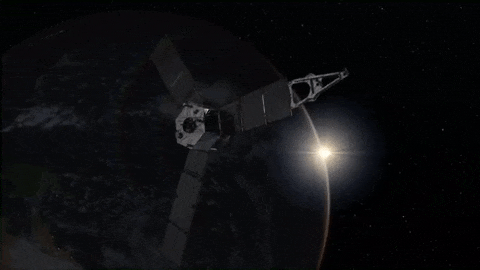

It Has a Protective Radiation Vault
Juno will avoid Jupiter’s highest radiation regions by approaching over the north, dropping to an altitude below the planet’s radiation belts, and then exiting over the south. To protect sensitive spacecraft electronics, Juno will carry the first radiation shielded electronics vault, a critical feature for enabling sustained exploration in such a heavy radiation environment.
Juno Science Payload:
Gravity Science and Magnetometers – Will study Jupiter’s deep structure by mapping the planet’s gravity field and magnetic field.
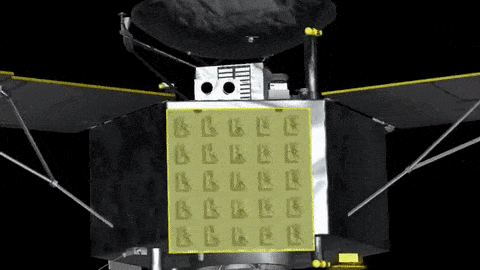
JADE and JEDI
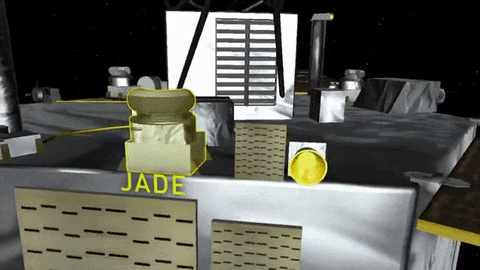

UVS
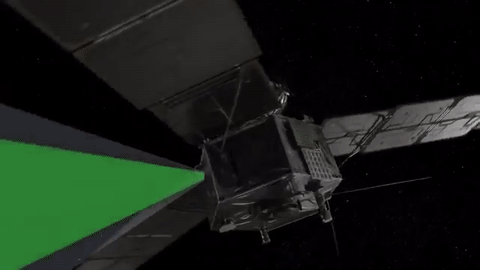

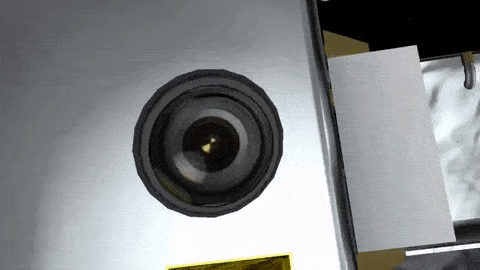
Solar System: Things to Know This Week

For the first time in almost a decade, we’re going back to Jupiter. Our Juno spacecraft arrives at the king of planets on the fourth of July. From a unique polar orbit, Juno will repeatedly dive between the planet and its intense belts of charged particle radiation. Juno’s primary goal is to improve our understanding of Jupiter’s formation and evolution, which will help us understand the history of our own solar system and provide new insight into how other planetary systems form.
In anticipation, here are a few things you need to know about the Juno mission and the mysterious world it will explore:
1. This is the Big One

The most massive planet in our solar system, with dozens of moons and an enormous magnetic field, Jupiter rules over a kind of miniature solar system.
2. Origin Story
Why study Jupiter in the first place? How does the planet fit into the solar system as a whole? What is it hiding? How will Juno unlock its secrets? A series of brief videos tells the stories of Jupiter and Juno. Watch them HERE.
3. Eyes on Juno
If you really want a hands-on understanding of Juno’s flight through the Jupiter system, there’s no better tool than the “Eyes on Juno” online simulation. It uses data from the mission to let you realistically see and interact with the spacecraft and its trajectory—in 3D and across both time and space.
4. You’re on JunoCam!

Did you know that you don’t have to work for NASA to contribute to the Juno mission? Amateur astronomers and space enthusiasts everywhere are invited to help with JunoCam, the mission’s color camera. You can upload your own images of Jupiter, comment on others’ images, and vote on which pictures JunoCam will take when it reaches the Jovian system.
5. Ride Along

It’s easy to follow events from the Juno mission as they unfold. Here are several ways to follow along online:
Subscribe to:
Comments (Atom)


























